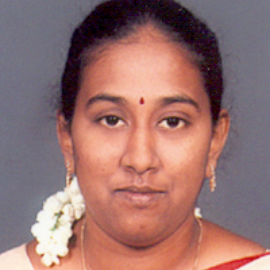International Journal of Intelligent Systems and Applications (IJISA)
IJISA Vol. 12, No. 4, 8 Aug. 2020
Cover page and Table of Contents: PDF (size: 451KB)
Uncovering Brain Chaos with Hypergraph-Based Framework
Full Text (PDF, 451KB), PP.37-47
Views: 0 Downloads: 0
Author(s)
Index Terms
Hypergraph, multi-level neuron, brain disorder, visualization, communication network
Abstract
The scientist has proven that the birth of neurons in a region of adult rat brain migrates from their birthplace to other parts of the brain. The same process also happens in adult humans. There was no efficient visualization tool to view the functions and structures of the human brain. In this paper, we focus to design a framework to understand more about Alzheimer’s disease and its process of neurons in the human brain. This framework named a hypergraph-based neuron reconstruction framework. It helped to map, the birth and death of neurons with the construction and reconstruction of the hypergraph. This framework also recognizes the structural changes during the life cycle of the neuron. Its performance was evaluated quantitatively with small-world networks and robust connectivity measures.
Cite This Paper
Shalini Ramanathan, Mohan Ramasundaram, "Uncovering Brain Chaos with Hypergraph-Based Framework", International Journal of Intelligent Systems and Applications(IJISA), Vol.12, No.4, pp.37-47, 2020. DOI:10.5815/ijisa.2020.04.04
Reference
[1]Petersen, S.E., Sporns, O.: Brain Networks and Cognitive Architectures. Neuron. 88, 207–219 (2015). https://doi.org/10.1016/J.NEURON.2015.09.027.
[2]Bassett, D.S., Sporns, O.: Network neuroscience. Nat. Neurosci. 20, 353–364 (2017). https://doi.org/10.1038/nn.4502.
[3]Sporns, O.: Graph theory methods: applications in brain networks. Dialogues Clin. Neurosci. 20, 111–121 (2018).
[4]Zu, C., Gao, Y., Munsell, B., Kim, M., Peng, Z., Cohen, J.R., Zhang, D., Wu, G.: Identifying disease-related subnetwork connectome biomarkers by sparse hypergraph learning. Brain Imaging Behav. 13, 879–892 (2019). https://doi.org/10.1007/s11682-018-9899-8.
[5]Faber, V.: Hypergraph reconstruction. Presented at the (1974). https://doi.org/10.1007/BFb0066182.
[6]Mohan R Shalini R: Neuroinformatics Conference, https://abstracts.g-node.org/conference/NI2018/abstracts#/uuid/340cca06-1ea0-42bc-9a37-04f07828da89.
[7]Reti, I.M.: Brain Stimulation: Methodologies and Interventions. Wiley (2015). https://doi.org/10.1002/9781118568323.
[8]Kogan, M., McGuire, M., North, J.R.-N.C. of, 2019, undefined: Deep Brain Stimulation for Parkinson's Disease. europepmc.org.
[9]Saggar, M., Sporns, O., … J.G.-C.-N., 2018, undefined: Towards a new approach to reveal the dynamical organization of the brain using topological data analysis. nature.com.
[10]Mišić, B., Sporns, O.: From regions to connections and networks: new bridges between brain and behavior. Curr. Opin. Neurobiol. 40, 1–7 (2016). https://doi.org/10.1016/J.CONB.2016.05.003.
[11]Poo, M., Du, J., Ip, N.Y., Xiong, Z.-Q., Xu, B., Tan, T.: China Brain Project: Basic Neuroscience, Brain Diseases, and Brain-Inspired Computing. Neuron. 92, 591–596 (2016). https://doi.org/10.1016/j.neuron.2016.10.050.
[12]Calvetti, D., Pascarella, A., Pitolli, F., Somersalo, E., Vantaggi, B.: Brain Activity Mapping from MEG Data via a Hierarchical Bayesian Algorithm with Automatic Depth Weighting. Brain Topogr. 32, 363–393 (2019). https://doi.org/10.1007/s10548-018-0670-7.
[13]Ramos, K.M., Grady, C., Greely, H.T., Chiong, W., Eberwine, J., Farahany, N.A., Johnson, L.S.M., Hyman, B.T., Hyman, S.E., Rommelfanger, K.S., Serrano, E.E., Churchill, J.D., Gordon, J.A., Koroshetz, W.J.: The NIH BRAIN Initiative: Integrating Neuroethics and Neuroscience. Neuron. 101, 394–398 (2019). https://doi.org/10.1016/J.NEURON.2019.01.024.
[14]Nazari, A., Alavimajd, H., … N.S.-B. and clinical, 2019, undefined: Prediction of Brain Connectivity Map in Resting-State fMRI Data Using Shrinkage Estimator. ncbi.nlm.nih.gov.
[15]Mindy Weisberger, S.W.: New Supercomputer with 1 Million Processors Is World’s Fastest Brain-Mimicking Machine, https://www.livescience.com/64005-worlds-largest-supercomputer-human-brain.html.
[16]Wei, K., Cieslak, M., Greene, C., Grafton, S.T., Carlson, J.M.: Sensitivity analysis of human brain structural network construction. Netw. Neurosci. 1, 446–467 (2017). https://doi.org/10.1162/NETN_a_00025.
[17]Liu, M., Zhang, J., Yap, P.-T., Shen, D.: View-aligned hypergraph learning for Alzheimer’s disease diagnosis with incomplete multi-modality data. Med. Image Anal. 36, 123–134 (2017). https://doi.org/10.1016/j.media.2016.11.002.
[18]Shalini R, Mohan R: Diagnosis of Alzheimer ’s disease using Hypergraph. In: G-Node (2018). https://doi.org/10.12751/incf.ni2018.0098.
[19]Wang, Y., Zhu, L., Qian, X., Image, J.H.-I.T. on, 2018, undefined: Joint hypergraph learning for tag-based image retrieval. ieeexplore.ieee.org.
[20]Natraj, N., Neuron, K.G.-, 2018, undefined: Shaping reality through mental rehearsal. Elsevier.
[21]Liew, S.-L., Schmaal, L., Jahanshad, N.: Editorial: Collaborative Efforts for Understanding the Human Brain. Front. Neuroinform. 13, (2019). https://doi.org/10.3389/fninf.2019.00038.
[22]Nawaz, M., Khan, S., Qureshi, R., Yan, H.: Clustering-based one-to-one hypergraph matching with a large number of feature points. Signal Process. Image Commun. 74, 289–298 (2019). https://doi.org/10.1016/J.IMAGE.2019.01.001.
[23]Shalini, R., Mohan, R.: Drugs Relationship Discovery using Hypergraph. Int. J. Inf. Technol. Comput. Sci. 10, 54–63 (2018).
[24]Teeter, C., Iyer, R., Menon, V., Gouwens, N., Feng, D., Berg, J., Szafer, A., Cain, N., Zeng, H., Hawrylycz, M., Koch, C., Mihalas, S.: Generalized leaky integrate-and-fire models classify multiple neuron types. Nat. Commun. 9, 709 (2018). https://doi.org/10.1038/s41467-017-02717-4.
[25]Sporns, O.: Graph theory methods: applications in brain networks. Dialogues Clin. Neurosci. 20, 111–121 (2018).
[26]Lippert, T., Thomas: HPC for the human brain project. In: Proceedings of the 28th ACM international conference on Supercomputing - ICS ’14. pp. 1–1. ACM Press, New York, New York, USA (2014). https://doi.org/10.1145/2597652.2616584.
[27]Xu, P., Tian, G., Zuo, R., Zhu, N., Electronics, Y.L.-C.J. of, 2019, undefined: VisConnectome: An Independent and Graph-Theory Based Software for Visualizing the Human Brain Connectome. IET.
[28]Lu, H., Li, Y., Chen, M., Kim, H., Serikawa, S.: Brain Intelligence: Go beyond Artificial Intelligence. Mob. Networks Appl. 23, 368–375 (2018). https://doi.org/10.1007/s11036-017-0932-8.
[29]Farahani, F. V., Karwowski, W., Lighthall, N.R.: Application of Graph Theory for Identifying Connectivity Patterns in Human Brain Networks: A Systematic Review. Front. Neurosci. 13, (2019). https://doi.org/10.3389/fnins.2019.00585.
[30]D. K. Thakkar, V.R.D.: Edge Stable Sets and Secured Edge Stable Sets in Hypergraphs. Int. J. Math. Sci. Comput. 5, 71–81 (2019).
[31]Bloch, I., for, A.B.-I.C. on D.G., 2019, undefined: A New Entropy for Hypergraphs. Springer.
[32]Ritz, A., Avent, B., Murali, T.M.: Pathway Analysis with Signaling Hypergraphs. IEEE/ACM Trans. Comput. Biol. Bioinforma. 14, 1042–1055 (2017). https://doi.org/10.1109/TCBB.2015.2459681.
[33]Qin, Y.-Y., Li, Y.-P., Zhang, S., Xiong, Y., Guo, L.-Y., Yang, S.-Q., Yao, Y.-H., Li, W., Zhu, W.-Z.: Frequency-specific Alterations of Large-scale Functional Brain Networks in Patients with Alzheimerʼs Disease. Chin. Med. J. (Engl). 128, 602–609 (2015). https://doi.org/10.4103/0366-6999.151654.
[34]Mertz, A., Slough, W.: Graphics with PGF and TikZ. (2007).
[35]Keserwani, P., Pammi, V.S.C., Prakash, O., Khare, A., Jeon, M.: Classification of Alzheimer Disease using Gabor Texture Feature of Hippocampus Region. Int. J. Image, Graph. Signal Process. 8, 13–20 (2016).
[36]Medina, R.: Recovering the Past: Historical Memory and Alzheimer’s Disease. In: Cinematic Representations of Alzheimer’s Disease. pp. 171–204. Palgrave Macmillan UK, London (2018). https://doi.org/10.1057/978-1-137-53371-5_6.
[37]Naresh, Korrapati: Alzheimer’s Disease and Memory Loss - A Review. (2016). https://doi.org/10.4172/2161-0460.1000259.
[38]Ala, T.A., Simpson, G., Holland, M.T., Tabassum, V., Deshpande, M., Fifer, A.: Many caregivers of persons with memory loss or Alzheimer’s disease are unaware of the abilities of their persons with AD to recall their drugs and medical histories. Dementia. 147130121882096 (2018). https://doi.org/10.1177/1471301218820969.
[39]Watts, D.J., Strogatz, S.H.: Collective dynamics of ‘small-world’ networks. Nature. 393, 440–442 (1998). https://doi.org/10.1038/30918.
[40]Liu, J., Zhou, M., Wang, S., Liu, P.: A comparative study of network robustness measures. Front. Comput. Sci. 11, 568–584 (2017). https://doi.org/10.1007/s11704-016-6108-z.
[41]Habel, A., Sandmann, C.: Graph Repair by Graph Programs. Presented at the June 25 (2018). https://doi.org/10.1007/978-3-030-04771-9_31.

